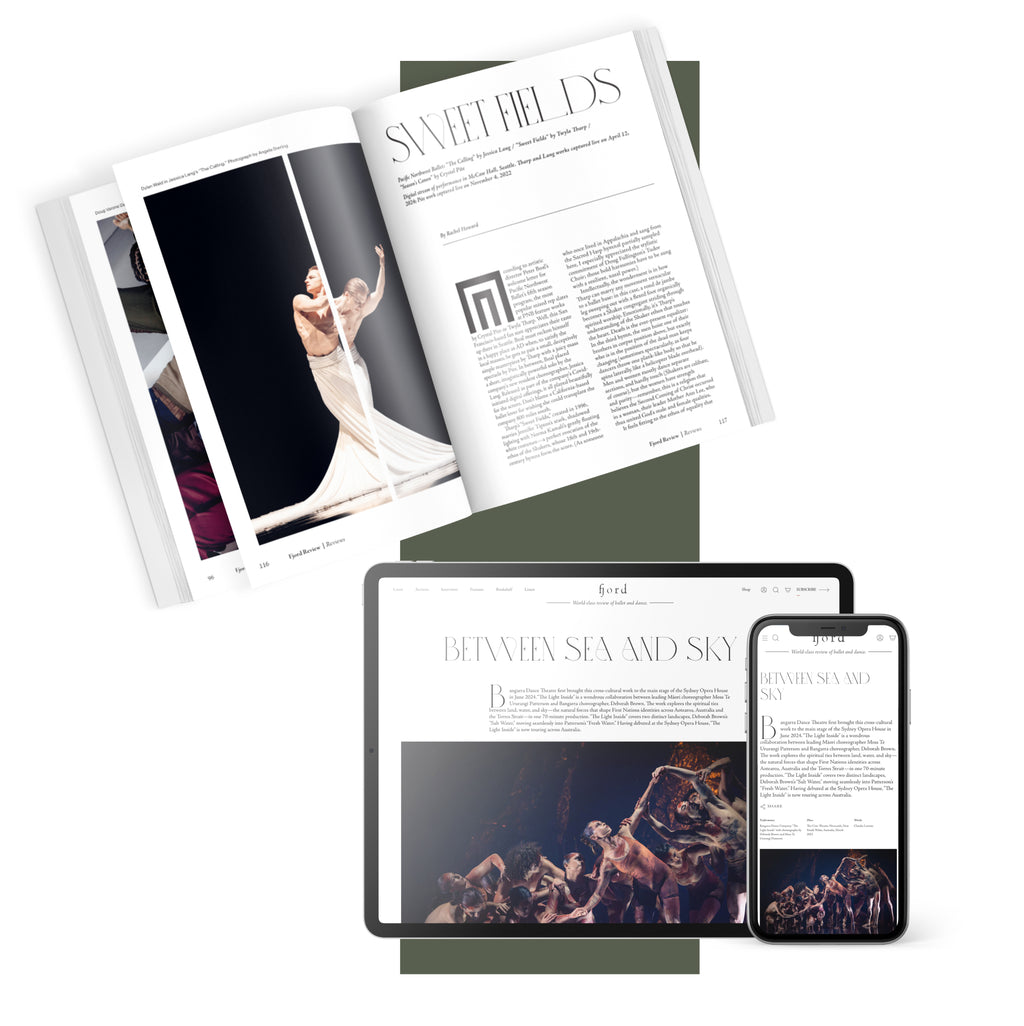Though I understand the need to invoke the fame of Pushkin’s 1833 verse novel “Eugene Onegin” and Tchaikovsky’s 1879 opera of the same name (oddly enough, none of that music appears in the ballet—Kurt-Heinz Stolze spliced lesser-known Tchaikovsky pieces together to craft the score), the focus of Cranko’s “Onegin” is not Onegin, but the bookish and romantic Tatiana. Some playwrights and choreographers, like John Neumeier, have titled their versions of this tale after her. The curtain rises on Tatiana, dreamy and wistful, at the top of the show, and it falls on her, sorrowful and defiant, at the close. Her youthful crush on the snobby and callous Onegin sets the tragic events of the plot in motion, and her reunion with him at the end is meaningful only because she bitterly mourns the loss of her initial fantasy.
Audiences aren’t nearly as invested in Onegin’s arc, likely because the journey from rich young jerk to rich jerk in a midlife crisis is not that compelling. One can garner a little sympathy for Onegin by making him arty and depressive, a more Proustian figure. But on opening night, Cory Stearns went boldly in the other direction and did not try to soften or humanize him. He was pure Darth Vader as he strode across the stage in his long black cloak after shooting his best friend Lensky in their pointless duel. In his Act III reentry at a St. Petersburg ball, he seemed as jaded and bored as ever. He appeared less regretful about scorning Tatiana those many years ago because of newfound admiration for her, and more about wanting to reclaim a lost prize. Their reconciliation pas de deux was harsh and grabby, as if she were an object to be possessed rather than a person to be seduced. He did kneel on the floor at her feet, but he encircled her whole body with his arms on the way down, like a snake devouring its prey.
I enjoyed Stearns’s read, it suited him physically (he’s quite tall, with raven hair and square features) and it put the spotlight squarely on Tatiana’s internal conflict. Stearns wasn’t kind or encouraging to her, the Onegin she fell in love with was truly a figment of her imagination (a result of her limited country circle, voracious reading, and stifled intellect). It was Jane Austen’s Pride and Prejudice gone terribly wrong: Onegin was an unreformed Mr. Darcy who killed his best friend Mr. Bingly (Lensky) out of perverse boredom and regretted his earlier rejection of Elizabeth Bennet (Tatiana) only after she was gainfully wed into a higher rung of the social ladder. And Stearns’s stark villainy helped sell some of James F. Ingalls’s goofy lighting choices: like when Onegin appeared in Tatiana’s mirror for the passionate Act I fantasy pas de deux and the stage turned bilious green, as if we were transported to the set of Broadway’s “Wicked.”
Christine Shevchenko did not play Tatiana as flighty and immature even in the opening scene of girlish games and fortune telling. Her Tatiana was an aloof dreamer throughout, which was a smart choice. She too is tall and imposing, and she left the childishness to Zimmi Coker, who danced the role of her playful younger sister Olga with brio. Their contrasting approaches worked especially well in their many opposite bits of choreography, as when Coker’s Olga bourréed forwards in sixth position like the joyful canary fairy in “Sleeping Beauty” while Shevchenko’s Tatiana bourréed backwards in sixth in a zombified trance, like the fateful sleepwalker in Balanchine’s “La Sonnambula.” These women were making their debuts, as was talented Jake Roxander in the sidekick role of Lensky. My only complaint about his interpretation was that in his tormented pre-duel solo, his consistently controlled quintuple pirouettes did not exactly project inner turmoil. Boy were they beautiful though. This is a perpetual story ballet conundrum, one that has plagued opera divas and divided audiences for centuries. Should a soprano quaver on a top note to be inject realism into a death scene aria? Should dancers sacrifice technical prowess in favor of dramatic characterization?










comments